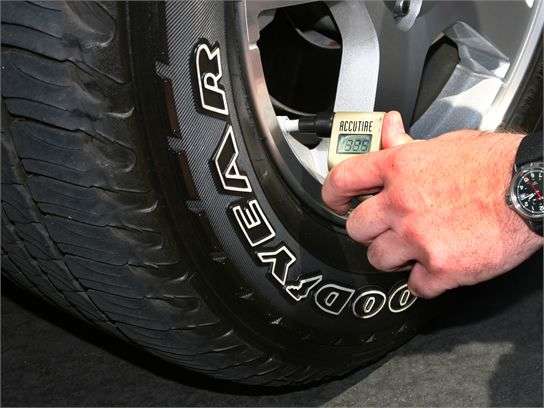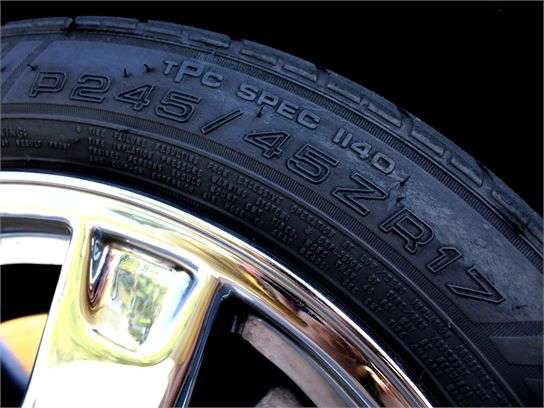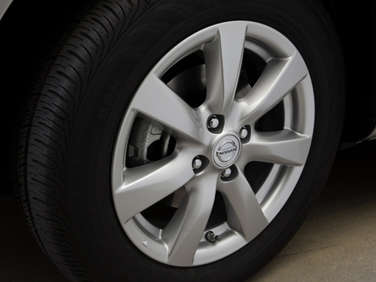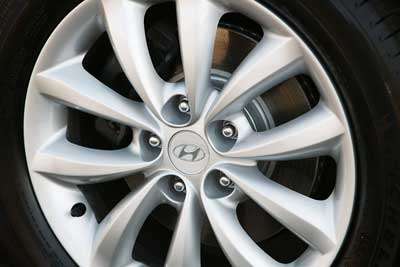Recent Articles
Popular Makes
Body Types
What Are Nitrogen Filled Tires?

Arguably, the most significant tire innovation was the vulcanization process. In 1843, Charles Goodyear figured out how to remove sulfur from rubber. He learned that if you did so and then heated it this would improve rubber’s ability to maintain its elasticity. The process had the further benefit of making rubber waterproof. Goodyear's process was patented in 1844.
In 1888, John Boyd Dunlop built upon Goodyear's innovation when he developed the first practical inflatable (pneumatic) tire for his son’s bicycle. Dunlop's idea was to use air pressure to reduce the shock transmitted from the road surface into the bicycle. Leveraging this innovation, Andre Michelin, in 1895 developed a pneumatic tire for automobiles.
However, his invention did not work very well.
Because of this, it wasn't until 1911 that the first practical inflatable automobile tire was invented. This was when Philip Strauss came up with the concept of using an inner tube to contain the air. Thus, Strauss developed the air-filled car tire, by combining a tire with an air-filled inner tube. Strauss marketed the tires through his company called the Hardman Tire & Rubber Company.
Interestingly, the first tubeless tire was developed and patented long before that.
In 1903, P.W. Litchfield, working for the Goodyear tire company, came up with a reliable tubeless tire. However, Litchfield’s tubeless Goodyear tire was not used until 1954, when it was finally fitted to a Packard model. And while there have been many incremental developments to improve tires since then, by and large they still operate based on Litchfield’s principle of the compressed-air inflated tubeless tire.
However, one tire innovation that has caused a great deal of both interest and controversy is the substitution of nitrogen for compressed air to inflate automotive tires.
Nitrogen In Tires: Pros
With advances in technology came the ability to separate nitrogen from air and the potential for inflating tires with nitrogen. This practice has long been followed in heavy-duty situations like large trucks, racing cars and aircraft. Because nitrogen is a drier gas, one of its chief advantages is the fact moisture does not condense inside a nitrogen filled tire.
Water vapor is a natural by-product of compressed air. If special care isn’t taken to drain air compressors, one can actually wind up pumping trace amounts of water into tires during the inflation process. Over time, this can add up to a pretty significant amount of water, which, in turn, can lead to the corrosion of your wheels, degrading of the rubber inside your tire, a resulting loss of tire pressure, and even wheel failure.
Nitrogen on the whole, is a much more stable gas than compressed air. Nitrogen doesn’t expand when heated or contract when cooled. This means tire pressures remain more stable over the various operating temperature ranges of a nitrogen-filled tire. In racing, where the handling of a car can be affected by miniscule differences in tire pressure, the stability afforded by nitrogen inflation is significant. For a passenger car, this improved pressure stability can mean both longer tire wear and better fuel economy.
Another claimed advantage of nitrogen over compressed air is the fact nitrogen molecules are larger than air molecules so they don’t leach out of a tire as readily. Rubber is a porous material, and over time air will seep through the microscopic pores in a tire. Nitrogen molecules have a tougher time getting through those pores, so the gas remains in a tire longer.
Since nitrogen stays in a tire longer, this can potentially reduce the number of underinflated tires on the road since most people are pretty lax about checking their tires. Underinflated tires can cost about a three percent reduction in fuel economy. While this might not sound like a whole lot, when you multiply it by the number of cars on the street and realize this translates into something like two billion gallons of fuel annually…

Nitrogen In Tires: Cons
The most significant con of nitrogen inflation is that for passenger cars, most of the benefits of inflating tires with the gas are negligible. Tractor/trailer big rigs and aircraft tires deal with a lot more weight than passenger cars, and they are exposed to much more extreme conditions. Because of this, the advantages of using nitrogen in those situations are considerably more significant.
Most passenger cars will never experience similar extremes.
Yes, racing cars can benefit tremendously from the stability inherent to nitrogen filled tires, so it makes sense to use the gas there as well. The more consistent you can make every aspect of the car, the more readily additional speed can be found. And, the more predictable the car becomes for the driver. However, the average driver of a passenger car won’t notice a .5-PSI pressure difference—where a racing driver absolutely would.
Yes, a nitrogen-filled tire will maintain air pressure longer, but at the cost of an additional $10 per tire versus simply checking your tires on a regular basis—each individual must decide whether the advantage is worth the additional expenditure. For most people, the differences are so minor, it might not be worth the additional expense.
Additionally, claims of water vapor causing damage can be questioned because most wheels these days are made of alloys and do not rust. If you have an inexpensive car with steel wheels this might be a concern, but the odds are the treads of your tires will wear out long before the wheel rusts. In other words, yes it’s a possibility, but the probability is somewhat limited.

Nitrogen In Tires: Conclusions
Long story short, many of the claimed advantages of nitrogen-filled tires are true. They do stay inflated longer, they don’t incur water condensation as readily, they can last longer before wearing out, and they can absolutely contribute to better fuel economy.
This better fuel economy can lead to less fuel consumed, which of course results in fewer pollutants being released into the atmosphere. This means a cleaner environment for us all. The thing is though, all of those things can happen with plain old compressed air inflation too.
Paying careful attention to the maintenance and condition of your tires will reap the same benefits, without the added expense nitrogen inflation imposes. Checking your tires regularly during fuel stops to make sure they are properly inflated will extend tire wear and improve fuel economy over underinflated tires.
Bottom line, if you’re inclined to be somewhat neglectful, and you don’t mind the extra cash, going nitrogen is absolutely a way to go to improve the performance and longevity of your tires. However, if you’re a diligent individual, you can just as easily make all the same stuff happen with a $2.50 tire gauge—rather than spending your hard-earned money for a nitrogen fill.
